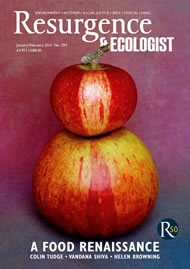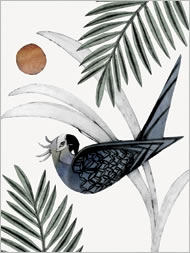One of the greatest ironies in the history of 20th-century poetry is concealed in the forests of southern Chile. Pablo Neruda’s train driver father, José del Carmen, was initially appalled to find that his son was writing poems. But in taking the young boy – then called Neftalí Reyes – on magical train journeys through those woods, he was unwittingly filling him with the overwhelming passion for Nature that would later infuse so much of his Nobel Prize-winning verse.
Neruda wrote in the poem The Frontier – 1904 (the year of his birth) from his 1950 book, Canto general:
The first thing I saw was trees, ravines,
decorated with flowers of savage beauty,
moist land, forests ablaze,
and behind the world lay winter, overflowing.
My childhood was wet shoes, shattered tree trunks
toppled in the forest, swallowed by lianas
and beetles, days of resting gently on beds of oats.
Neruda was not religious, but those haunting Chilean forests were his sacred space. He said as much in his wonderfully life-affirming memoirs, published posthumously in 1974, a year after he died from cancer. (That is the official version of his death. His body was exhumed in 2013 to investigate claims that he might have been poisoned in hospital by his political enemies – namely, agents of the military dictatorship of General Augusto Pinochet – and remains above ground to this day. The poet’s bones have been examined in Chile, North Carolina in the United States, Murcia in southern Spain, and Switzerland. In June 2015, the forensic team in Murcia announced that it had found a mysterious protein toxin from the Staphylococcus aureus bacterium, whose source was unclear. In a remarkable development in November 2015, the Chilean government conceded, for the first time, that it was “highly likely” his death was brought about by a third party.)
Neruda wrote that, when he was a child, Nature filled him with “a kind of intoxication. I must have been around ten years old but I was already a poet. I wasn’t yet writing verse, but I was attracted to the birds, the beetles, the perfection of insects, partridge eggs.”
The thrice-married Neruda often insisted that his main driving forces were love and Nature. Almost all of his books contain poems dedicated to the beauties of the natural world around him. It was no coincidence that he adopted as his false identity ‘Antonio Ruiz Lagorreta, ornithologist’ before escaping across the Andes from Chile into Argentina on horseback in 1949. (He had been forced into hiding for a year after courageously standing up in the Senate in the Chilean capital, Santiago, and condemning his own President, Gabriel González Videla, for behaving like a fascist.)
In 1966, he published a delightful volume entitled The Art of Birds. In it, real birds alternate with imaginary ones bearing a politically satirical message – for example Tontivuelo – Autoritarius Multiformis (‘The Stupid Winged Military Dictator Bird’), which
couldn’t fly, just couldn’t fly,
but gave orders for others to fly.
Julio Escámez, the Chilean artist who illustrated this book, recalled that he and Neruda would set out at the crack of dawn and settle down for long hours to observe the birds at a distance. “For a painter, working with Pablo means forging a contact with a whole world of stimuli…” Escámez said.
Neruda’s friend Tomás Lago remembered the poet suddenly asking the driver of his car to stop while being driven down to Temuco (the southern Chilean town where he grew up). It turned out that Neruda had seen two loicas (long-tailed meadowlarks) in a tree and was compelled to halt the journey to observe them at close quarters.
Neruda was not merely lured to natural objects by the physical beauty all around him in his beloved Chile, the homeland he memorably called a “long petal of sea and wine and snow”. He also loved the sound their names made in Spanish. Indeed, it is perhaps in so many of his deceptively simple odes (he wrote 225 of them) that we see the enchantment of Nature’s nomenclature in its most crystalline clarity.
In the Ode to the Birds of Chile, from his first collection of odes, the Odas elementales (1954), Neruda refers to the indigenous diuca (finch), the queltehue (lapwing), the canastero (passerine), the chirigüe (canary) – names that sing off the page. Neruda, like his great friend Pablo Picasso, made the ordinary extraordinary and the extraordinary ordinary. He wrote odes to the tomato, the onion and the artichoke, but also to a dog, an elephant, several to flowers, and a little-known and extremely beautiful ode to a carob tree still throbbing after being felled during a storm. Neruda feels its death as keenly as if it were a brother: I left the wind / keeping watch and weeping.
There is, however, a rich and complex tension running through much of Neruda’s poetry, between the call of the natural world and the need for radical social and political change, a tension George Handley has called “the twin pulls of the biocentric and the anthropocentric”. The aesthetic values Neruda fervently treasures can run contrary to his praise for human labour.
In one of Neruda’s most famous poems, Walking Around – written in Buenos Aires in 1933 and ostensibly describing the sterility of bureaucracy – he declares:
All I want is to rest among stones and wool,
all I want is to see no more establishments or gardens…
These lines should not be tritely interpreted as the poet’s drawing an opposition between Nature and society, between natural simplicity and urban artifice. The ambivalence is far more profound. For Neruda, stone is a life force. Which is why 10 years later his visit to the Incan fortress, Machu Picchu, high up in the Andes, had such a potent effect on him. It was not just that he was lured back to the time of early humans, to his pre-Columbian ancestors who had built the site. Stone itself exerted its magic on him – and can there be anything more representative of the origins of Nature than stone? As for wool, it does indeed form a contrast with the synthetic, while gardens are human-made constructions, not the wild forests of his childhood.
At the same time, unlike for Walt Whitman – one of his great literary heroes – Neruda’s repeated encounters with Nature were often nostalgic, bitter-sweet reunions with solitude, reminders of those years as a lonely, sickly child in Temuco, but also of his desolate early diplomatic postings in Asia in the late 1920s and early 1930s. Indeed, he wrote back from the Far East, “between nature and me, there remains a veil, a subtle cloth.”
Ultimately, Neruda was one of the great humanist poets. His dual compulsions – for contact with Nature, on the one hand, and with his friends and loved ones, on the other – were not only equally powerful, but also inseparable. As his close friend Jorge Edwards – his second-in-command when Neruda was Chilean Ambassador in Paris in the early 1970s – astutely noted, a poet of Nature is not simply a creator of bucolic songs. “Neruda’s poetry was more vigorous the closer it came to nature. Yet nature does not just mean the landscape, as some critics would have you believe, but man himself.”
All translations by the author. Adam Feinstein’s biography, Pablo Neruda: A Passion for Life, was reissued by Bloomsbury in an updated edition in 2013.








